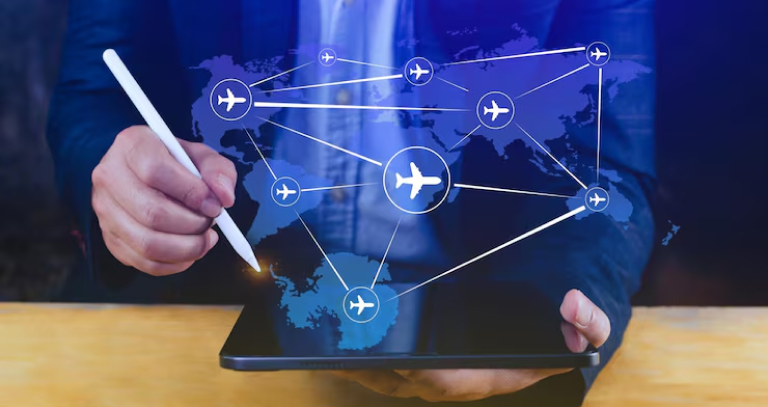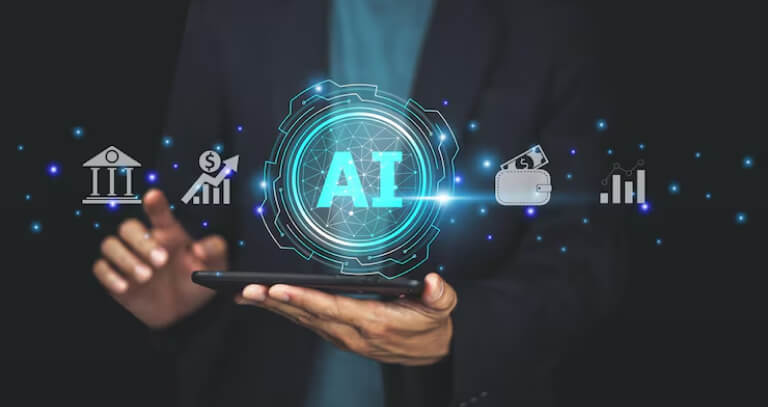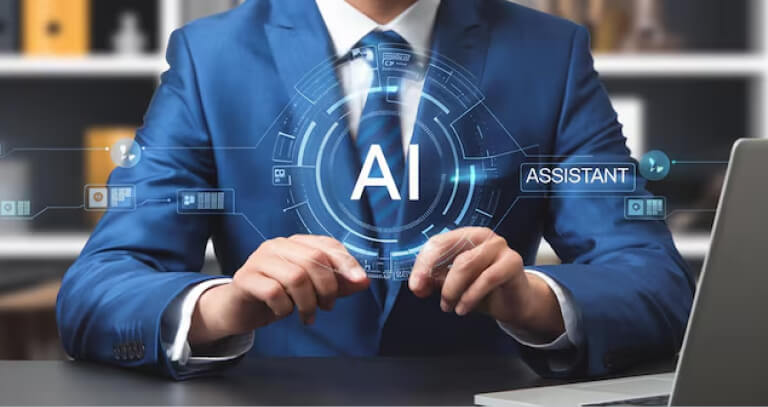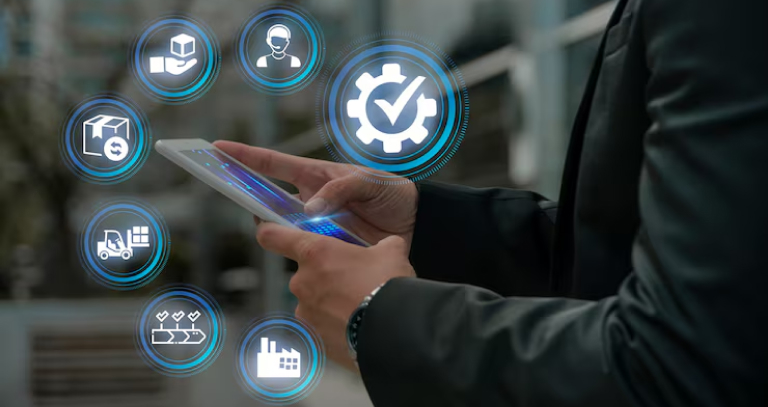IT Modernization vs Digital Transformation - What's the Difference?
Ditstek Blogs
Imagine this—you’re running a business with systems that feel like they belong in a museum. Your servers groan under pressure, your software is clunky, and your IT team spends more time patching issues than innovating. You know change is inevitable. But here’s the real question: Do you need an upgrade, or do you need a revolution?
This is where the lines between IT Modernization and Digital Transformation start to blur. Both involve technology. Both promise better efficiency. But they’re not the same thing.
Think of IT Modernization as renovating an old house—fixing the plumbing, upgrading the wiring, maybe adding smart lighting. Your foundation stays the same, but things run smoother. Digital Transformation, on the other hand, is like tearing down the house and building a futuristic smart home from the ground up—rethinking how everything works to fit a new era.
Businesses often confuse the two, leading to wasted resources and missed opportunities. Pick the wrong approach, and you could end up with a shiny new system that still doesn’t solve your actual business problems.
So, how do you decide? That’s exactly what we’ll uncover in this blog. Let’s break it down—without the jargon, without the fluff—so you can make the right call for your business.
What is IT Modernization?
Let’s get one thing straight—IT modernization is not about chasing the latest tech trends. It’s about survival. Businesses running on outdated systems don’t just lose efficiency; they bleed money, slow down innovation, and expose themselves to security risks.
At its core, IT modernization is the process of upgrading legacy systems, infrastructure, and software to improve efficiency, scalability, and security—without completely overhauling the business model. Think of it like giving an aging car a powerful new engine, better brakes, and an upgraded dashboard instead of scrapping it entirely.
What Does IT Modernization Look Like?

- Migrating to the cloud – Moving from clunky on-premise servers to flexible cloud solutions.
- Upgrading software & infrastructure – Replacing legacy applications, enhancing cybersecurity, and improving system integrations.
- Automating manual processes – Reducing human errors and speeding up operations.
- Enhancing scalability & performance – Making IT systems future-ready without disrupting core business functions.
Why IT Modernization Matters?
Companies that delay modernization risk rising maintenance costs, security vulnerabilities, and sluggish performance. Meanwhile, businesses that modernize cut costs, boost efficiency, and improve user experience—without disrupting daily operations.
Take the financial sector: Many banks still run on decades-old mainframes. Those that upgraded to cloud-native platforms and AI-driven fraud detection not only enhanced security but also gained a competitive edge.
Modernization is a necessity, not a luxury. But is it enough? Not always. That’s where digital transformation takes things to the next level.
What is Digital Transformation?
If IT modernization is about upgrading, digital transformation is about reinventing. It’s not just swapping out old systems for new ones—it’s about changing the way a business operates, delivers value, and competes in a digital-first world.
At its core, digital transformation means integrating digital technologies into every part of a business—from customer interactions to internal workflows—to create a smarter, more agile, and more data-driven organization. Unlike IT modernization, which focuses on improving existing systems, digital transformation rethinks the entire business model to stay ahead in an evolving market.
What Does Digital Transformation Look Like?

- Customer-Centric Innovation – Using AI, IoT, automation, and analytics to personalize experiences.
- Business Model Reinvention – Moving from traditional product-based approaches to digital-first strategies (think Netflix shifting from DVDs to streaming).
- Data-Driven Decision Making – Leveraging big data and AI for real-time insights and smarter business moves.
- Seamless Digital Operations – Eliminating silos by integrating cloud, IoT, and smart automation tools.
Why Digital Transformation Matters?
Companies that fail to transform don’t just fall behind—they become obsolete. Just look at Blockbuster vs. Netflix. One adapted, the other didn’t.
Digital transformation isn’t just about technology; it’s about adapting to changing customer expectations, creating new revenue streams, and unlocking new growth opportunities. Businesses that embrace it are more competitive, agile, and prepared for the future.
So, where does IT modernization fit into all of this? Let’s break it down.
Key Differences Between IT Modernization & Digital Transformation

While both IT modernization and digital transformation are crucial for any business aiming to stay competitive, they are fundamentally different in their scope, objectives, and impact. So, how do they differ? Let’s break it down:
1. Scope & Focus
| IT Modernization | Digital Transformation |
| Narrower in scope—it’s all about upgrading existing systems to improve performance, security, and efficiency. The goal is to optimize the current infrastructure without disrupting the core business model. | A broader, more holistic shift. It’s about rethinking your entire business—how you operate, engage customers, and deliver value. Transformation is a fundamental change in business strategy, culture, and tech to fully embrace the digital era. It’s not just about tools, but how you do everything. |
2. Approach
| IT Modernization | Digital Transformation |
| Focuses on incremental improvements—updating systems, replacing outdated software, and adopting new technologies to improve current processes. It’s about efficiency and security. | Involves radical reinvention of processes, workflows, and even the business model itself. It’s not just about tech updates; it’s about revolutionizing how a company interacts with its market. |
3. Goals & Outcomes
| IT Modernization | Digital Transformation |
| The main goal is to make your existing operations faster, more secure, and cost-effective. The outcome? A more reliable, future-ready IT environment. | The goal is to reshape the entire business model—unlocking new revenue streams, improving customer experiences, and creating agility for the future. It’s about staying competitive, not just functional. |
4. Time Frame
| IT Modernization | Digital Transformation |
| Usually a shorter-term initiative, often with clear milestones like migrating to the cloud or upgrading infrastructure. It’s a tactical approach. | A longer, ongoing process. It’s a strategic journey that requires a shift in mindset, culture, and operations—this isn’t a quick fix, but a continuous evolution. |
5. Impact on Culture
| IT Modernization | Digital Transformation |
| Primarily focused on technology—its impact on the culture is more subtle. It’s about making sure the tech works smoothly behind the scenes, without major changes to how the company operates. | Has a profound impact on company culture. It requires collaboration, adaptability, and a digital-first mindset from every employee. Transformation often triggers a cultural shift towards innovation and agility. |
6. Customer Experience
| IT Modernization | Digital Transformation |
| Primarily focuses on improving internal systems, which can indirectly enhance customer experiences through better service delivery or quicker response times. | Directly impacts the customer journey—everything from personalized experiences to seamless interactions with brands. It’s designed to revolutionize how customers perceive and interact with your brand. |
7. Technological Integration
| IT Modernization | Digital Transformation |
| Integrates newer technologies into existing infrastructures. It’s about making legacy systems compatible with modern tools. | Involves complete integration of cutting-edge technologies, such as AI, IoT, blockchain, and cloud solutions, into core business functions to create a more connected, efficient ecosystem. |
8. Cost & Resource Investment
| IT Modernization | Digital Transformation |
| Requires moderate investment—it’s about optimizing current systems, with a focus on ROI over the short term. | Requires significant investment—it’s about disrupting business as usual, so expect a higher cost, longer payback periods, and strategic investments in technology and people. |
How IT Modernization Supports Digital Transformation?

While IT modernization and digital transformation are distinct processes, they are deeply intertwined. Think of IT modernization as the foundation upon which digital transformation is built. Without a solid, upgraded infrastructure, digital transformation can feel like trying to build a skyscraper on shaky ground. Let’s dive into how modernization acts as a stepping stone toward full transformation.
1. Streamlining Operations for Transformation
IT modernization focuses on upgrading legacy systems, streamlining operations, and improving the overall efficiency of existing IT infrastructure. This makes it easier to implement new digital tools and embrace modern technologies like AI, cloud computing, and IoT. With smoother, more efficient systems in place, businesses are better equipped to handle the demands of digital transformation.
2. Enhancing Scalability
One of the core benefits of IT modernization is scalability. As businesses move toward digital transformation, they need IT systems that can scale with growth. Modernized infrastructures are built to handle the influx of data, increased user demands, and new applications. This scalability supports the expansion of digital initiatives, ensuring the business can grow and adapt to new technology without hitting roadblocks.
3. Enabling Data-Driven Decision-Making
In the world of digital transformation, data is the new currency. Legacy application modernization provides businesses with advanced data management and analytics tools that allow them to collect, store, and analyze data more efficiently. By modernizing IT systems, organizations can move away from disparate, siloed data and embrace centralized data ecosystems that fuel insights and drive informed decision-making—a crucial element of digital transformation.
4. Improving Cybersecurity & Compliance
Digital transformation introduces a host of new technologies and platforms, which can leave businesses vulnerable to security risks. IT modernization addresses this concern by upgrading security frameworks to protect against new threats. With modernized systems, companies can embrace the digital landscape while ensuring they meet regulatory compliance like HIPAA and GDPR and adhere to best security practices. This proactive approach allows businesses to grow digitally without compromising safety.
5. Facilitating Collaboration & Innovation
Modernized IT infrastructure enables teams to collaborate more seamlessly, no matter their location. With cloud computing, integrated communication platforms, and other collaborative tools, businesses can foster a culture of innovation. This foundation of interconnectedness is essential for driving the continuous evolution that digital transformation demands. IT modernization removes the technological barriers, empowering employees to think creatively and push boundaries.
6. Simplifying Customer Experience
Digital transformation is all about improving the customer experience, and IT modernization makes it easier to offer faster, more responsive services. From improving customer-facing applications to enabling more efficient customer support, modernized systems allow businesses to deliver a seamless, personalized experience. Whether through mobile apps Dubai, AI based chatbots, or personalized recommendations, modernized IT makes these tools possible.
Choosing the Right Approach for Your Business
When it comes to deciding between IT modernization and digital transformation, businesses often face the challenge of choosing the path that best aligns with their goals, resources, and long-term vision. While both approaches lead to improved operations and growth, each one serves a specific purpose. The decision should be based on where your business stands today, where you want to go, and the changes you're ready to make. Let’s break down when each approach makes sense.
When to Choose IT Modernization
If you find your business dealing with outdated systems that are slowing down operations, increasing costs, or exposing you to security risks, it’s time to consider IT modernization. This approach is perfect when you need to optimize existing systems rather than reinventing the wheel. Here’s when you should choose IT modernization:
When Legacy Systems Are Slowing Operations
If your current systems are aging, fragmented, and causing delays in processing or decision-making, it’s time to modernize. IT modernization helps revamp your legacy systems to become faster, more efficient, and better equipped for the future.
When Cost and Security Concerns Arise
Older systems can be expensive to maintain, prone to security vulnerabilities, and inefficient. Modernizing your IT infrastructure reduces these risks by implementing advanced security measures, streamlining costs, and ensuring smoother operations.
Key Questions to Ask Before Modernizing
- Are your current systems causing delays, errors, or inefficiencies in daily operations?
- Do you need to improve the security and compliance of your IT environment?
- Is your budget better suited for upgrading systems rather than investing in a complete overhaul?
When to Choose Digital Transformation
Digital transformation is for businesses looking to completely overhaul how they operate, innovate, and deliver value to customers. It's about embracing technology-driven change and enhancing customer experience at every level. Here’s when digital transformation is the best choice:
When Business Needs a Complete Operational Overhaul
If your business is looking to break free from traditional methods and reimagine its entire operation, digital transformation is the answer. This approach is ideal if you want to introduce cutting-edge technologies and fundamentally restructure processes for greater agility, efficiency, and innovation.
When the Focus Is on Innovation and Customer Experience
When your business goals revolve around innovation, enhancing customer engagement, or staying ahead of competitors, digital transformation opens the door to new possibilities. It enables businesses to integrate AI, IoT, cloud services, and automation into their operations, creating more seamless and personalized customer experiences.
Key Questions to Ask Before Transforming
- Are you ready to embrace a new business model driven by technology?
- Is your business culture open to change and disruption?
- Do you have the budget and resources for a complete overhaul of your operations, technology, and customer-facing services?
Conclusion
In the evolving world of technology, businesses face the crucial decision of choosing between IT modernization and digital transformation. While these two strategies are distinct, they both play a significant role in helping businesses become more efficient, secure, and competitive.
IT modernization is ideal for organizations looking to improve and optimize their existing systems, ensuring they’re better equipped for future challenges. It's about upgrading the foundation while maintaining continuity in operations. On the other hand, digital transformation is for businesses ready to break the mold and innovate their entire business model, often from the ground up. It’s about embracing disruption and adopting cutting-edge technologies that can redefine customer experiences and open new doors for growth.
The key is understanding where your business currently stands, where you want to go, and how ready you are for change. Both strategies offer tremendous benefits, but the right choice depends on your unique goals, resources, and overall vision. When done thoughtfully, the right approach will not only modernize your systems but transform your business for the future.
FAQs
How do modernization and transformation support long-term growth?
Both IT modernization and digital transformation are critical for long-term growth. Modernization enhances your existing infrastructure, ensuring stability and security, while digital transformation drives innovation and opens up new opportunities for efficiency, agility, and customer engagement. Together, they create a strong foundation for sustainable growth and adaptability.
Can modernization and transformation work together?
Absolutely! Many businesses start with IT modernization to update their existing systems, laying a strong foundation for future digital transformation. Once the infrastructure is modernized, the next step can be implementing innovative technologies and transforming business processes to achieve greater efficiency and innovation. Both approaches complement each other.
What are the hidden costs of modernization and transformation?
While both strategies can provide immense benefits, there are hidden costs to consider. IT modernization often comes with the cost of ongoing maintenance for older systems, compatibility issues, and unforeseen delays during upgrades. For digital transformation, the costs can include a significant investment in new technologies, staff training, cultural shifts, and possible disruptions during the transition phase. Both require careful planning and a clear understanding of the resources needed to succeed.
How can businesses determine which approach is best for them?
The right approach depends on several factors, including your current infrastructure, business goals, and long-term vision. If you're looking to optimize existing systems, reduce risks, and improve efficiency, IT modernization is the way to go. However, if your business needs a complete overhaul to adapt to new market demands or innovate customer experiences, digital transformation is the better fit.
How long does it take to implement IT modernization or digital transformation?
The timeline for both varies based on the scope of the project. IT modernization might take a few months to a year, depending on the complexity of the systems being upgraded. Digital transformation, on the other hand, is a more extensive process that could take years to fully implement, especially if it involves a complete business model shift.
Can small businesses benefit from IT modernization and digital transformation?
Yes, both approaches can benefit businesses of any size. For small businesses, IT modernization can significantly improve operations by upgrading legacy systems and reducing operational costs. Meanwhile, digital transformation can help small businesses scale faster by embracing innovative tools and strategies that offer better customer engagement and operational flexibility.

Dinesh Thakur
21+ years of IT software development experience in different domains like Business Automation, Healthcare, Retail, Workflow automation, Transportation and logistics, Compliance, Risk Mitigation, POS, etc. Hands-on experience in dealing with overseas clients and providing them with an apt solution to their business needs.
Recent Posts
Get in touch








.jpg)

